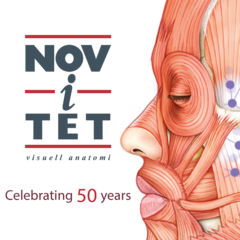Keytruda visar förbättrad händelsefri överlevnad (EFS) efter behandling vid huvud- och halscancer
MSDs KEYTRUDA® (pembrolizumab) Met Primary Endpoint of Event-Free Survival (EFS) as Perioperative Treatment Regimen in Patients With Resected, Locally Advanced Head and Neck Squamous Cell Carcinoma.
KEYNOTE-689 is the first Phase 3 trial to demonstrate statistically significant and clinically meaningful improvement in EFS in the intent-to-treat population in the neoadjuvant and adjuvant setting for an anti-PD-1 therapy in earlier stages of head and neck squamous cell carcinoma.
MSD announced that the Phase 3 KEYNOTE-689 trial evaluating KEYTRUDA ® (pembrolizumab), Merck’s anti-PD-1 therapy, as a perioperative treatment for patients newly diagnosed with stage III or IVA, resected, locally advanced head and neck squamous cell carcinoma (LA-HNSCC) met its primary endpoint of event-free survival (EFS). The study evaluated KEYTRUDA as neoadjuvant therapy, then continued after surgery in combination with standard-of-care radiotherapy (with or without cisplatin) as adjuvant therapy, followed by KEYTRUDA as maintenance therapy, compared to adjuvant radiotherapy (with or without cisplatin) alone. At a pre-specified first interim analysis conducted by an independent Data Monitoring Committee, there was a statistically significant and clinically meaningful improvement in EFS for patients receiving the KEYTRUDA perioperative treatment regimen. The study also showed a statistically significant improvement in major pathological response (mPR), a key secondary endpoint, for patients in the KEYTRUDA arm compared with adjuvant radiotherapy alone. The safety profile of KEYTRUDA was consistent with that observed in previously reported studies; no new safety signals were identified.
“These results are substantial, as KEYNOTE-689 marks the first positive trial in two decades for patients with resected, locally advanced head and neck squamous cell carcinoma,” said Dr. Marjorie Green, senior vice president and head of oncology, global clinical development, MSD Research Laboratories. “These statistically significant and clinically meaningful findings have the potential to be practice-changing and continue to highlight the promising role of KEYTRUDA for certain patients with earlier stages of disease.”
A trend toward improvement in overall survival (OS), another key secondary endpoint, was observed for KEYTRUDA as neoadjuvant treatment and KEYTRUDA in combination with standard-of-care radiotherapy (with or without cisplatin) as treatment after surgery and maintenance therapy with KEYTRUDA. The OS results did not reach statistical significance in patients whose tumors were PD-L1 Combined Positive Score (CPS) ≥10 at the time of this first interim analysis. Due to the statistical testing hierarchy, formal testing was not performed in the CPS ≥1 and intention-to-treat (ITT) populations. OS will be evaluated at the next interim analysis.
Results will be presented at an upcoming medical meeting and will be submitted to regulatory authorities.
KEYTRUDA is currently approved as monotherapy and in combination regimens for appropriate patients with metastatic or unresectable, recurrent HNSCC in the U.S., Europe, China, Japan and other countries around the world. For more information, please see the “Selected KEYTRUDA ® (pembrolizumab) Indications in the U.S.” section below.
About KEYNOTE-689
KEYNOTE-689 is a randomized, active-controlled, open-label Phase 3 trial (ClinicalTrials.gov, NCT03765918 ) evaluating KEYTRUDA as neoadjuvant treatment then followed by KEYTRUDA in combination with standard-of-care radiotherapy (with or without cisplatin) as adjuvant treatment and then as a maintenance therapy in treatment-naïve patients with newly diagnosed, stage III or IVA resected locally advanced, head and neck squamous cell carcinoma. Efficacy outcomes are classified by PD-L1 CPS status. The primary endpoint is EFS, and secondary endpoints include OS, mPR, pathological complete response and safety. The study enrolled an estimated 704 patients who were randomized (1:1) to receive either:
KEYTRUDA (200 mg intravenously [IV] every three weeks [Q3W] for two cycles) as neoadjuvant therapy prior to surgery, followed by either KEYTRUDA (200 mg IV Q3W for 15 cycles) plus standard-of-care radiotherapy with cisplatin (100 mg/m 2 IV Q3W for three cycles) as adjuvant therapy following surgery for high-risk patients or KEYTRUDA (200 mg IV Q3W for 15 cycles) plus standard-of-care radiotherapy without cisplatin as adjuvant therapy following surgery for low-risk patients; or
No neoadjuvant therapy prior to surgery, followed by either standard-of-care radiotherapy with cisplatin (100 mg/m 2 IV Q3W for three cycles) as adjuvant therapy following surgery for high-risk patients or standard-of-care radiotherapy without cisplatin as adjuvant therapy following surgery for low-risk patients.





